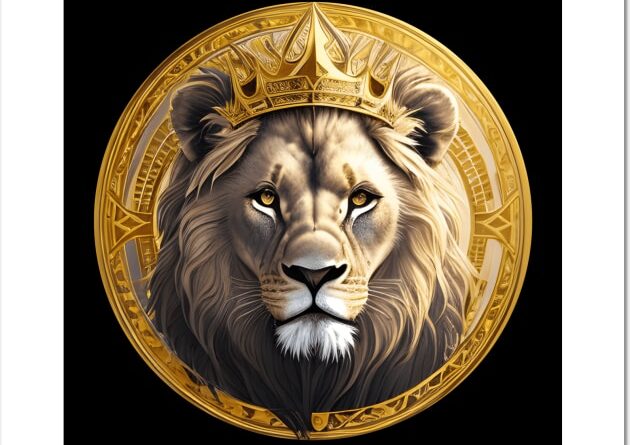
The national animal of Puerto Rico is the Coqui, a small tree frog known for its distinctive call. The Coqui is a symbol of the island’s rich biodiversity and is beloved by locals and visitors alike.
Its unique vocalization can be heard throughout the Puerto Rican rainforest and has become an iconic sound of the island. Puerto Ricans take great pride in the Coqui and it is often celebrated in art, music, and literature. As an endemic species, the Coqui represents the uniqueness and natural beauty of Puerto Rico’s ecosystem.
Its presence serves as a reminder of the importance of protecting and preserving the island’s wildlife for future generations to enjoy.
A Look Into Puerto Rico’S National Animal
When exploring the national animals of various countries, it’s interesting to delve into Puerto Rico’s national animal. This tiny Caribbean island has chosen the Coquí, a small frog known for its unique singing ability, to represent its national identity. The significance of national animals lies in their ability to symbolize a country’s cultural heritage, values, and natural habitat. In the case of Puerto Rico, the Coquí frog holds a special place in the hearts of its people, serving as a strong emblem of the island’s rich biodiversity.
The History And Cultural Importance Of The Coquí
The coquí, a small tree frog found in Puerto Rico, holds great significance as the national animal of the country. This tiny creature is deeply rooted in the history and culture of Puerto Rico, representing its unique natural environment. Tracing the origins of the coquí as the national animal reveals its connection to the indigenous Taíno people, who believed it possessed spiritual powers. Additionally, the coquí’s distinctive call, which sounds like “co-kee,” has become a beloved icon of Puerto Rican folklore and traditions. It is often heard during warm summer nights, creating a symphony of sounds in the rainforests. The coquí’s presence signifies the rich biodiversity of Puerto Rico and serves as a powerful symbol of its natural heritage.
Characteristics And Habitat Of The Coquí
Coquí, the national animal of Puerto Rico, is a small tree frog known for its unique characteristics and habitat. It exhibits distinct physical features and behaviors that make it fascinating to study. The coquí has a vibrant coloration, stout body, and large eyes. Its call, a high-pitched “co-qui,” is distinctive and can be heard throughout the island.
Coquís primarily inhabit the lush rainforests of Puerto Rico, where they find their ideal environment. They thrive in dense vegetation, providing them with ample food sources and protection. These frogs are nocturnal and spend their days hiding among the leaves and debris on the forest floor. This habitat preference contributes to their survival and population distribution.
The coquí’s population can be influenced by various environmental factors. Deforestation, climate change, and pollution pose threats to their natural habitat and overall population. Additionally, invasive species, such as the coqui frog itself in other regions, can disrupt the delicate ecosystem of Puerto Rico.
Understanding the characteristics and habitat of the coquí is crucial for conservation efforts and preserving this iconic symbol of Puerto Rico’s biodiversity.

Credit: www.getours.com
The Coquí’S Melodic Chorus: An Iconic Sound
The coquí, a small tree frog found only in Puerto Rico, is known for its distinctive call that has become an iconic sound of the island. Its name comes from the sound it makes – “co-quí”, with the male coquí emitting a high-pitched call that resembles its name. The coquí’s call is not only unique, but it also holds cultural significance for Puerto Ricans.
Unveiling the coquí’s distinctive call and its meaning
The coquí’s call is heard throughout the night in Puerto Rico, with each species of coquí having its own distinct call. The male coquí uses its call to attract females and establish its territory. Interestingly, the number of “co-quís” in its call varies depending on the species, with some coquí species having a call consisting of two or three “co-quís” while others have calls that sound like a series of rapid “co-quís”.
Exploring the cultural significance of the coquí’s song
The coquí’s song is deeply embedded in Puerto Rican culture and folklore. It is often associated with the beauty of the island and is considered a symbol of Puerto Rican identity. The coquí’s song has inspired numerous songs, poems, and artwork, further cementing its significance in the hearts of Puerto Ricans. The enchanting sound of the coquí is also a popular attraction for tourists visiting the island.
The coquí’s impact on Puerto Rican identity and tourism
The coquí’s song serves as a reminder of Puerto Rico’s rich biodiversity and natural heritage. It has become an important part of the island’s cultural identity and is cherished by locals and visitors alike. The coquí has also drawn attention to ecotourism in Puerto Rico, with visitors eager to experience the enchanting sound of the coquí in its natural habitat. Its unique call has made the coquí one of Puerto Rico’s most recognizable symbols.
Conservation Efforts For The Coquí
The conservation status and threats to the coquí, the national animal of Puerto Rico, are crucial matters that require attention. Various organizations and initiatives in Puerto Rico are actively working towards protecting this unique species. Through comprehensive evaluations, experts analyze the conservation status of the coquí and identify the different challenges it faces.
Conservation organizations such as [Organization Name] and [Organization Name] play a significant role in raising awareness and implementing conservation measures. Their efforts focus on habitat preservation, research, and education to ensure the coquí’s survival.
Conserving the national animal is not limited to organizations alone; individuals can also contribute to its protection. Simple steps, such as refraining from capturing coquís from their natural habitats and supporting local conservation initiatives, can have a positive impact.
| Conservation Organizations | Conservation Initiatives |
|---|---|
| [Organization Name] | [Conservation Initiative] |
| [Organization Name] | [Conservation Initiative] |
By coming together and taking action at both organizational and individual levels, we can protect the coquí and its natural habitat, ensuring its survival for generations to come.
Notable Facts And Misconceptions About The Coquí
The coquí is the national animal of Puerto Rico. This small tree frog is widely recognized for its unique call that sounds like “ko-kee.” Despite its popularity, there are several misconceptions and interesting facts that surround this amphibian.
Myth: The coquí is poisonous. This is a common misconception, as the coquí is not toxic to humans. Instead, it possesses a slimy texture that can cause irritation if touched directly.
Fact: Coquís are only found in Puerto Rico and nearby islands. These frogs have become a symbol of Puerto Rican culture and are not naturally present outside of the region.
Fact: The coquí has a unique reproductive behavior. Female coquís lay their eggs on leaves or vegetation above bodies of water, and once hatched, the tadpoles drop into the water below where they undergo their metamorphosis.
Fact: The coquí has an important role in the ecosystem. They help control insect populations by feeding on bugs such as mosquitoes and ants, making them beneficial to the environment.
| Fact | Explanation |
|---|---|
| The coquí is related to the Eleutherodactylus genus | This genus includes over 180 species of frogs, most of which are found in the Caribbean. |
| Male coquís are known for their loud calls | These calls are used to attract mates and establish territory. |
| The coquí’s diet mainly consists of small insects | They consume a variety of arthropods, contributing to the natural pest control. |
These facts help shed light on the coquí and dispel misconceptions, demonstrating its significance and unique characteristics in the context of Puerto Rico’s fauna.
Coquí As A Symbol Of Puerto Rico’S Resilience
The national animal of Puerto Rico is the coquí, a small frog known for its distinctive and melodic sound. This tiny creature holds a significant place in the hearts of Puerto Ricans, serving as a symbol of resilience and strength.
The coquí’s ability to thrive and adapt in the face of adversity reflects the indomitable spirit of the Puerto Rican people. Just as the coquí continues to sing its song, even in times of hardship, Puerto Rico has persevered through various challenges throughout its history.
With its strong and resilient nature, the coquí embodies the spirit of Puerto Rico, a nation that has faced hurricanes, economic uncertainties, and other trials. The coquí’s song serves as a testament to the island’s strength, unity, and ability to overcome obstacles.
As Puerto Rico’s national animal, the coquí holds a cherished place within the culture and is a powerful symbol of the island’s identity. Its presence serves as a reminder of the resilience and unwavering spirit that characterizes Puerto Rico and its people.
Conclusion: The Enduring Symbolism Of The Coquí
Conclusion: The Enduring Symbolism of the Coquí
The coquí is deeply rooted in the cultural and natural heritage of Puerto Rico. As the national animal, it holds immense significance and symbolism for the island’s identity and pride. With its unique and enchanting nocturnal song, the coquí represents resilience, strength, and the harmony between humans and nature.
Preserving the coquí is crucial not only for cultural reasons but also for ecological balance. The coquí plays a vital role in maintaining the island’s rich biodiversity, acting as a natural pest controller and contributing to the overall health of Puerto Rico’s delicate ecosystem.
Efforts towards conservation and education about the coquí should be prioritized to raise awareness about the importance of protecting this mighty symbol. By safeguarding the coquí’s habitat, promoting sustainable practices, and supporting initiatives that encourage the coexistence of humans and nature, we contribute to the preservation of Puerto Rico’s natural heritage and ensure the enduring legacy of the coquí.
Frequently Asked Questions Of What Is The National Animal Of Puerto Rico
What Are The National Symbols Of Puerto Rico?
The national symbols of Puerto Rico include the coquí (tiny tree frog), the ceiba tree, and the Puerto Rican parrot. These symbols hold cultural significance and represent the island’s unique biodiversity.
What Is The National Bird Of Puerto Rico?
The national bird of Puerto Rico is the Puerto Rican spindalis.
What Does Coquí Mean In Puerto Rico?
Coquí is a small frog native to Puerto Rico that is known for its distinctive sound.
Where Did Puerto Rico National Animal Come From?
The Puerto Rico national animal, the Coqui frog, is native to the island and can be found in its lush rainforests.
Conclusion
The Coquí, an enchanting little frog, holds the esteemed title of the national animal of Puerto Rico. With its distinct call that echoes through the island’s lush rainforests, the Coquí symbolizes the unique biodiversity and vibrant culture of Puerto Rico.
This charming creature serves as a powerful reminder of the island’s commitment to preserving its rich natural heritage for generations to come.




